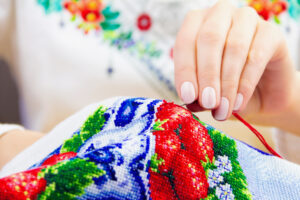Buying a diamond is no walk in the park; there’s a lot to consider before you put your hard-earned money into a stone, no matter how alluring it looks!
For the uninitiated, here are the basics to consider before splurging on a diamond.
Carat
The term ‘carat’ is often mistakenly used to describe the size of a diamond, when it actually refers to its weight. By definition, 1 carat equals 200 milligrams, and is divided into 100 ‘points’.
Price increases with caratage, which simply means that a larger diamond will be pricier than a smaller one. However, large diamonds are also rare, so a single huge one will be more expensive than two smaller diamonds together, even though they equal the same carat weight!
Cut
The cut of a diamond determines how much it will sparkle. Cut describes the shape of a diamond and the number of facets it has. It also refers to the proportion, finish, symmetry, and polish of the stone. Well-cut diamonds sell at a premium price, so while other factors are equally important, it’s noteworthy that a diamond with perfect clarity and color grade can appear dull if the cut is poor!
Diamond cuts with the right proportions allow light that enters the diamond to be returned to the top of the stone. With a shallow cut, light leaks out of the bottom and with a deep cut, it escapes from the side. A diamond with the highest grade of cut gathers and reflects the most light, making it sparkle the brightest. Grades go from Poor/Fair to Good, Very Good, and Ideal cuts.
Color
Diamonds are found in a range of colors, with colorless ones being rare and the most valued. While some diamonds with pink, blue and yellow hues are highly prized, the presence of a yellow tint in a white diamond greatly reduces the value of the stone.
Coloring present in a diamond causes less natural light to be reflected back. As such, the more colorless a diamond, the more radiant it is. Interestingly, the setting of a diamond in a piece of jewelry, like a ring or a pair of earrings, and the color of the jewelry itself play a huge role in altering the perception of the stone’s color.
The GIA (Gemological Institute of America) grades diamond color as follows:
- D, E, F – Colorless
- G, H, I, J – Nearly Colorless
- K, L, M – Faint Tint
- N-R – Very Light Tint
- S-Z – Light Tint
Bear in mind that the untrained eye cannot make out color differences for G-J graded diamonds, especially when one is viewed on its own instead of with differently graded diamonds placed adjacently.
Clarity
Clarity grades the visual appearance of a diamond. This quality metric assesses a diamond’s surface characteristics, called blemishes, and/or internal characteristics, called inclusions. Clarity grades are determined depending on the number of inclusions and the size, nature, and location of each.
Numerous or significant blemishes or inclusions make a diamond less brilliant as the flaws interfere with how light passes through the stone. Common types of inclusions are bearding, graining, and cavities. While grading, diamonds are examined for flaws under 10x magnification.
Based on clarity, diamonds are graded as follows:
- IF/FL – Internally Flawless
- VVS1 – Very Very Slightly Included (1st Degree)
- VVS2 – Very Very Slightly Included (2nd Degree)
- VS1 – Very Slightly Included (1st Degree)
- VS2 – Very Slightly Included (2nd Degree)
- SI1 – Slightly Included (1st Degree)
- SI2 – Slightly Included (2nd Degree)
- I1 – Included (1st Degree)
Buyer Tips:
Diamonds come in a range of shapes – round, princess, oval, emerald, and more! Decide on the shape and carat weight keeping your budget in mind. Remember that a lot of factors come into play in making an exceptional diamond- you don’t want to spend money on caratage but hold back on the type of cut or clarity.
Also, if you’re on a budget, there are a number of ways you can flaunt a brilliant diamond without having to buy a top-notch stone. For example, choose a metal like yellow or rose gold instead of platinum for a diamond graded G-J. Alternatively, have the main diamond placed in a halo setting surrounded by diamonds that are duller so that your hero stands out!
Another idea is to drop to SI1 clarity for diamonds under one carat or go for a diamond with much lesser carat weight. You can always make smaller diamonds look bigger by playing with the settings- think bezel instead of prongs.
You don’t have to buy cheap; just buy smart!



 The Best Things to Do When Listening to Your Hip-Hop Playlist
The Best Things to Do When Listening to Your Hip-Hop Playlist




